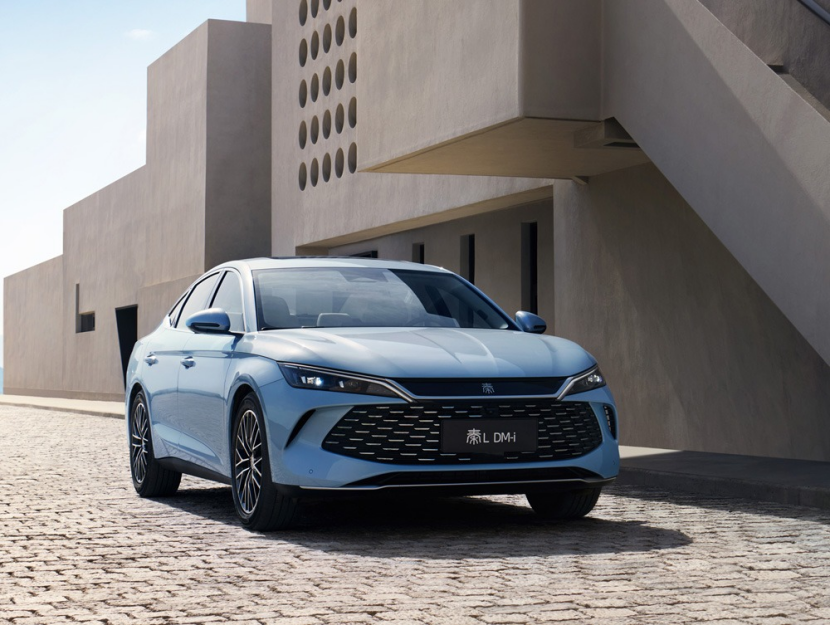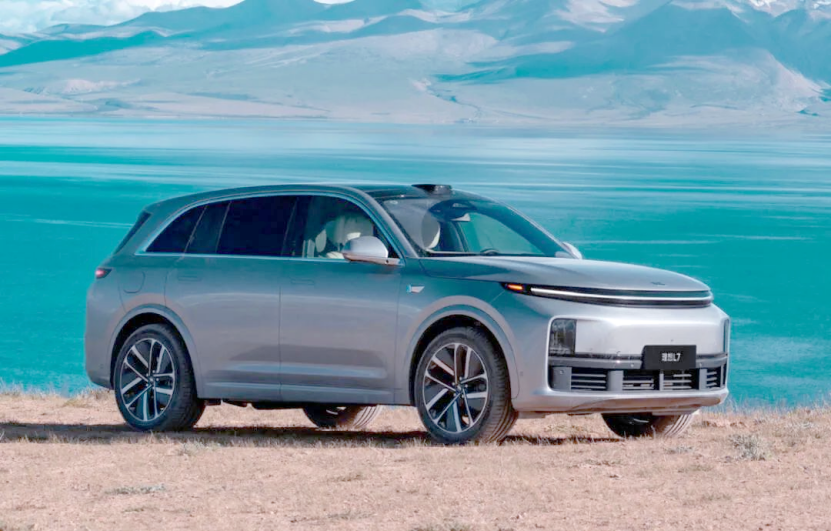First Half New Energy Vehicle Market: Accelerating Transformation in Product Mix and Consumer Preferences Amidst Slowing Growth
![]() 08/04 2025
08/04 2025
![]() 520
520
In the first half of 2025, the new energy vehicle (NEV) market, despite its continued expansion, displayed intricate and nuanced shifts. According to data from the China Association of Automobile Manufacturers, China's automobile production and sales exceeded 15 million units from January to June, with NEV production and sales reaching 6.968 million and 6.937 million units, respectively, up 41.4% and 40.3% year-on-year. NEV sales accounted for 44.3% of total new vehicle sales.
However, beneath the overall market buoyancy, there were marked differences in the performance of various technological routes: battery electric vehicles (BEVs) outpaced plug-in hybrids (PHEVs) in growth, while extended-range electric vehicles (EREVs) confronted structural challenges. Concurrently, consumer decision-making shifted from being "policy-driven" to "value-sensitive," with intelligence, practicality, and cost control emerging as core considerations.
▍Differentiation in Power Routes: Pure Electric Surpasses Hybrid
During the NEV market's surge, all models grew collectively, displaying steep growth curves. However, certain models are now among the first to feel the pinch of decelerating growth.
In the first half, pure electric vehicles sold a cumulative 4.415 million units, up 46.2% year-on-year, demonstrating robust growth. In 2023 and 2024, this segment's growth rates were 24.9% and 15.5%, respectively. Technologically, continuous innovation in battery technology has fueled the BEV market. Lithium iron phosphate (LFP) batteries, due to cost advantages and improved safety, expanded their installed share to 81.4% in the first half, surpassing ternary lithium batteries. Additionally, significant improvements in driving range have further bolstered consumer acceptance.
Currently, mainstream BEV models predominantly adopt 400V electrical architectures, paired with 65-85kWh battery packs, offering driving ranges generally between 450-550 kilometers, with some high-end models exceeding 700 kilometers. Furthermore, the gradual enhancement of charging infrastructure has strongly supported the BEV market's development. The increasing number of public charging stations and the continuous advancement of fast-charging technology have somewhat alleviated consumers' charging anxiety, fostering the steady growth of the BEV market.
From January to June this year, PHEV models sold a cumulative 2.521 million units in the Chinese auto market, up 31.1% year-on-year. In contrast, PHEV models' growth rates from 2021 to 2024 were 140%, 151.6%, 84.7%, and 84.5%, respectively, indicating a significant slowdown. Lin Huaibin, Deputy Director of S&P Global Mobility China Light Vehicle Sales Forecast, predicts that PHEV shares in 2025 will be lower than in 2024, with their growth rate gradually decelerating over the next two to three years. By June this year, the entire PHEV industry had an inventory of about 1.04 million vehicles, and leading enterprises had begun to enter a phase of deep inventory reduction.

In China, BYD dominates the PHEV market, with several models ranking among the top sellers. For instance, the BYD Qin L DM-i, equipped with the fifth-generation DM technology, balances performance and energy efficiency, precisely catering to family users' needs, making it the best-selling PHEV model. The industry generally anticipates that after 2026, the purchase tax exemption policy may exclude low-range PHEVs with a driving range of 80-100 kilometers from the preferential range, negatively impacting the market performance of some low-range PHEV models.
Meanwhile, EREV technology has encountered a demand bottleneck, recording the lowest growth rate among the three major routes. In the first half, sales of EREV models amounted to only 538,000 units. Lixiang Auto delivered 203,938 vehicles in the first half, up 7.9% year-on-year, but deliveries in June fell 24% year-on-year. Some analysts attribute this to technological redundancy and overheated supply. A survey by an automaker revealed that over 70% of EREV users drive more than 80% of the distance in pure electric mode, with the internal combustion engine range extender used for less than 15% of the time, increasing manufacturing costs without added value. In 2025, 24 new EREV models were introduced, bringing the total number of models on sale to over 50. Each model's average monthly sales are less than 1,000 units, revealing a divergence between "supply frenzy" and "demand calm".

Given the current imperfect charging infrastructure, EREVs meet the needs of some consumers. However, second-tier brand PHEV models face dual pressure from "policy withdrawal + demand contraction" due to outdated technology (such as single-gear DHT) and insufficient pure electric driving ranges of less than 100 kilometers. The industry expects the threshold for the new version of the purchase tax exemption policy for PHEVs to be raised to a pure electric driving range of 150 kilometers, further eliminating low-end capacity. Additionally, as pure electric models dip into the 100,000 yuan price range, EREVs, which need to be compatible with the fuel system, struggle to reduce costs, losing their cost-effectiveness advantage.
▍Shift in Decision-Making Logic: From Range Anxiety to Value Consensus
As the NEV market evolves, users' purchasing decision-making logic has undergone significant changes. Initially, consumers were primarily driven by factors such as policy subsidies and license plate advantages when purchasing NEVs. Pure electric vehicles, with their eco-friendly "zero emissions" image and relatively simple powertrain, became a popular choice. However, as the market matures and consumer understanding deepens, the factors influencing purchasing decisions have diversified.
Today, range anxiety, charging convenience, and comprehensive vehicle performance play crucial roles in consumer decision-making, highlighting the advantages of hybrid models (including PHEVs and EREVs). Consumers no longer focus solely on whether a vehicle is purely electric-driven but pay more attention to whether it provides a convenient and efficient travel experience across various usage scenarios.
According to the "2025 New Energy Vehicle Consumption Trend Insights," safety (85.67%), price (71.59%), and cost of use (68.85%) are the top three factors in purchasing decisions, while the emphasis on intelligent configuration has dropped to 48.6%. Policy makers have responded accordingly: the Ministry of Industry and Information Technology plans to mandate physical emergency switches for hidden door handles, urging automakers to balance aesthetics and safety.
"Smart value ratio" has replaced "configuration stacking," and users are increasingly willing to pay for practical functions. Xiaopeng's XNGP urban intelligent driving function has a monthly active user rate of 85%. However, demand is becoming more pragmatic: safety features such as AEB emergency braking and sentinel mode are now rigid demands, while "show-off" configurations like AR-HUD and gesture control have been marginalized. Although systems like Huawei's ADS 4.0 and Tesla's FSD compete fiercely in hardware stacking, users ultimately value technologies that "solve actual pain points".
The stratification and deepening of group needs drive the refinement of product definitions. Females' decision-making influence has risen to 48%, with their focus shifting from appearance to safety and convenience (penetration rates of automatic parking and blind spot monitoring exceed 70%). Family users have fueled the surge in six-seat pure electric SUVs. In the first half of 2025, NEVs accounted for over 65% of mid-to-large SUV sales, with six-seat models contributing 70% of sales. Second- and third-child families have become the core demographic, spurring a "space arms race".
Data from the first half of the NEV market reveals an increasingly differentiated industry landscape: some models have decelerated in growth, with BEVs, PHEVs, and EREVs exhibiting distinct growth curves based on their respective technologies, markets, and user needs. Users' purchasing decisions are gradually shifting towards in-depth considerations of safety and diverse travel scenarios.
Additionally, the performance of PHEV models in overseas markets in the first half is noteworthy. Cui Dongshu, Secretary-General of the Passenger Car Market Information Joint Council of the China Automobile Dealers Association, believes that the global auto market is undergoing an "electrification shuffle," and Chinese PHEVs are quickly capturing multiple overseas markets with their "technological leadership + cost advantage." For example, some European countries (like Germany) have adjusted their policies to include PHEVs in the subsidy range for "environmentally friendly vehicles," opening doors for Chinese PHEVs to enter the high-end market.
For automakers, accurately insighting into segmented market needs, enhancing BEV range and charging experience, optimizing PHEV performance and reducing costs, strengthening EREV models' unique advantages, and actively responding to changes in user decisions to create products that meet consumers' diverse needs will be crucial to standing out in the fiercely competitive NEV market in the second half of the year.
Typesetting | Yang Shuo
Image Sources: Qiankun Net, BYD Auto, Lixiang Auto





